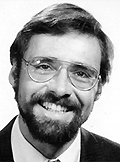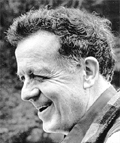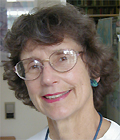|
By Jenny Coyle
Gary Spizizen - Raleigh, N.C.
Member, North Carolina Chapter
 Sometimes he does it on Saturday mornings for an hour or two. Other times it happens while he's watching television, or during breakfast on a workday. But somehow Gary Spizizen finds the time to write 10 to 15 letters to decision-makers each week. He even has a spreadsheet to keep track of where he sent letters and on which subjects. Sometimes he does it on Saturday mornings for an hour or two. Other times it happens while he's watching television, or during breakfast on a workday. But somehow Gary Spizizen finds the time to write 10 to 15 letters to decision-makers each week. He even has a spreadsheet to keep track of where he sent letters and on which subjects.
When The Planet asked him to write letters in support of bills to overturn President Bush's implementation of the global gag tule, Spizizen sent them to every member of the Senate Committee on Foreign Relations and the House Committee on International Relations, where the bills were referred.
It probably works to his advantage that he's a technical writer for a living.
"I don't do a lot of marching or go live in a tree," says Spizizen. "But I believe letters make a difference. I spend a lot of time crafting my letters, and I personalize them as much as possible. If I've written a letter about the environment and something good happens, I like to think I'm at least partly responsible."
Is he as faithful about writing letters to his mom? "I talk to her on the phone instead," he says. "And while we're talking, I'm writing, addressing and printing letters and envelopes to politicians."
Sam Hays - Boulder, Colo.
Member, National State and Private Forestry Committee
 Dr. Sam Hays was banging on doors to teach the history of the environmental movement practically before the environmental movement knew it had been born. Dr. Sam Hays was banging on doors to teach the history of the environmental movement practically before the environmental movement knew it had been born.
His first book, published in 1959, was called "Conservation and the Gospel of Efficiency," a history of conservation policy and politics in the era of Theodore Roosevelt. It was actually a revision of the doctoral dissertation he wrote in grad school at Harvard.
"Then I tried to get a job teaching conservation history, but everyone turned me down," says Hays. So he taught political, social and urban history instead in Illinois, Iowa and finally the University of Pittsburgh.
"After a while I looked around and the environmental movement was going pretty strong," he says. He dove back into his research. With his wife Barbara as collaborator, he wrote another book, "Beauty, Health and Permanence: Environmental Politics in the United States, 1955-1985." A shorter, more layperson-friendly version, "Environmental Politics in the United States Since 1945," was published in October 2000.
"Knowing environmental history can provide a perspective that makes sense of specific environmental action," says Hays, who worked on forestry issues in Pennsylvania and continues to do so in Colorado, where he and Barbara moved this year.
By the way, in 40 years of teaching at three major universities, Hays never held a parking permit, preferring to walk instead.
Vicky Hoover - San Francisco, Calif.
Staff, Alaska Task Force
 Ask Vicky Hoover to describe exactly what it is she loves about her favorite wild places, and her eyes get a distant look in them. She's running an internal slide show of the Tablelands in Sequoia National Park, the coastal plain of the Arctic National Wildlife Refuge and the Toiyabe Range in Nevada. Ask Vicky Hoover to describe exactly what it is she loves about her favorite wild places, and her eyes get a distant look in them. She's running an internal slide show of the Tablelands in Sequoia National Park, the coastal plain of the Arctic National Wildlife Refuge and the Toiyabe Range in Nevada.
After a pause, she speaks: "I love horizontally expansive places, where you have that broad vista feeling, as though you can see forever. I feel at home in such places; I belong there."
Hoover is Sierra Club through and through. Except for visiting her grandchildren and catching the occasional opera, everything else she does is about the Club. She works part-time for the Alaska Task Force, as a volunteer chair of the California/Nevada Regional Wilderness Committee, and is a member of the Utah Wilderness Task Force and the national Recreation Issues Committee.
As an outings leader, she has led mountain biking, backpacking and car-camping trips to places like New Zealand, Alaska, Utah and the Sierra Nevada, typically weaving a conservation message into her travels. Her kids went on their first Club outings at ages 4 and 5.
If the past repeats itself, those visits with the grandkids, who are still toddlers, will soon become Sierra Club adventures as well.
Know someone whose story is deserving? Contact us at:
The Planet
85 Second St., Second Floor
San Francisco, CA 94105
planet@sierraclub.org.
Up to Top
|